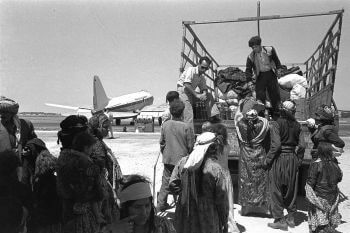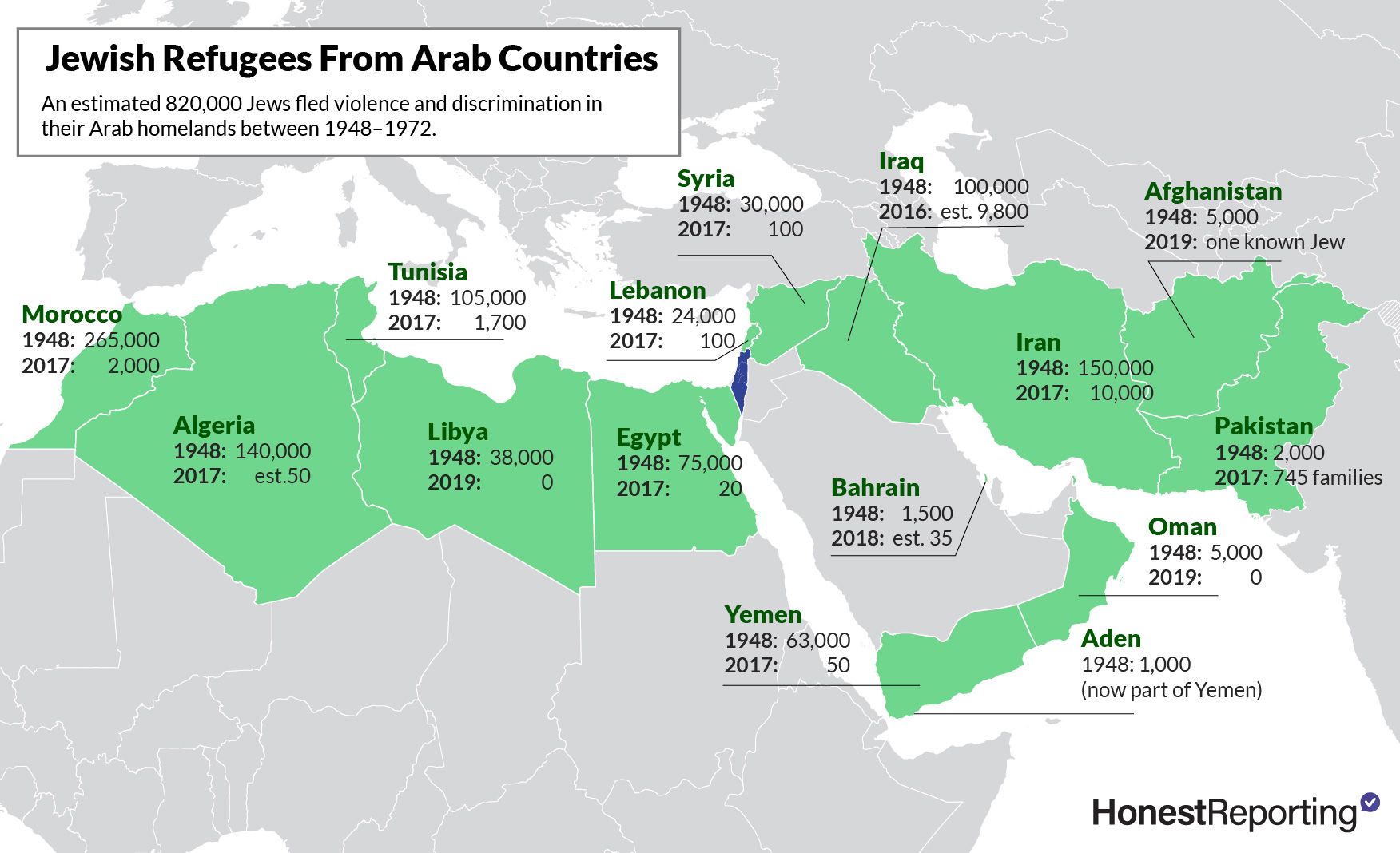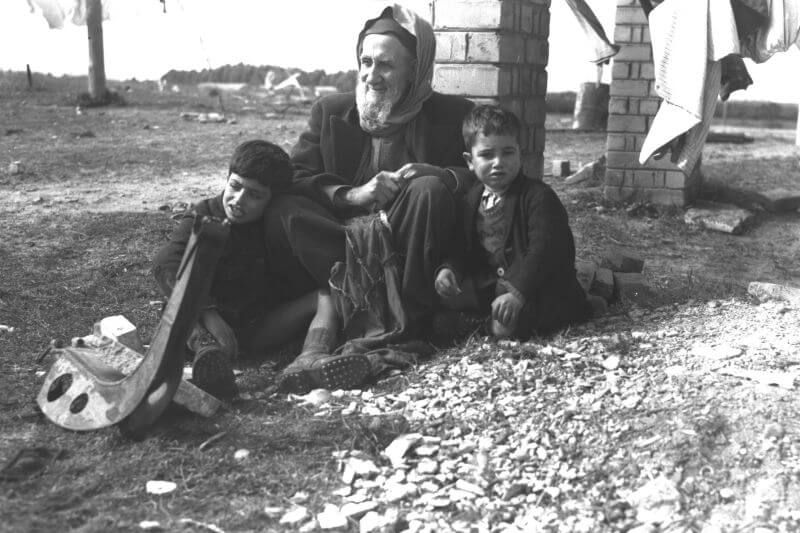Much has been written about the Palestinian refugees, but little attention has been paid to nearly one million Jewish refugees forced to flee their Arab homelands in North Africa, the Arabian Peninsula, the Levant and beyond.
Between 1948-1972, approximately 586,000 Jews from Arab countries were resettled in Israel, while 200,000 more moved to North America and Europe. The vast majority of Jewish refugees were destitute, their property confiscated by the Arab governments they left behind. Absorbing so many refugees was difficult and costly for Israel, nearly doubling the young country’s population.
They never had any interest in a “right of return” to the homes they left behind — ancient communities in far-flung places like Morocco, Afghanistan, Yemen and Syria that predated Islam.
Their absorption into Israeli society was not smooth; newcomers were housed in tents and shacks in crowded, spartan transit camps and temporary communities called maabarot. Some of Israel’s current social tensions trace their roots back to the maabarot: European Ashkenazi immigrants tended to be better educated, have smaller families, were more likely to assimilate into secular society, and qualified for German war reparations. The Mizrahi (literally, eastern) Jews were less-educated, had larger families, were more religious, and didn’t qualify for German war reparations. Their absorption was supported by an austerity government and supplemented by donations from world Jewry.
Join the fight for Israel’s fair coverage in the news
Today, nothing remains of the original maabarot. Mizrahi Jews are full members of Israeli society; they and their descendants make up about half of Israel’s population. Having integrated into Israeli society, they are no longer refugees and no longer newsworthy.
So why do the Jewish refugees from Arab countries still matter? Why is their story still relevant for today, rather than relegated to history books?
The number of Jews who fled their Arab homelands during Israel’s founding and early years amounts to a population exchange with the Palestinian refugees who fled their homes during the wars of 1948 and 1967. A peace agreement addressing compensating Palestinian refugees would also have to take into account Arab compensation for dispossessed Jews.
Some background is necessary to understand why.

Second-Class Citizens
Under Arab rule, Jews, Christians and other non-Muslims were considered dhimmis, or second-class citizens. This status meant Jews had to pay a special yearly tax, could not build synagogues or too openly practice their religion. To further reinforce their lower status, dhimmis could not build homes as tall as the Muslims, were required to dress differently, and weren’t allowed to ride horses — only donkeys. Jewish orphans were frequently removed from the community and forcibly converted to Islam. In North Africa, Jewish communities had to live in a ghetto (mellah). For better (and sometimes for worse), Arab rulers weren’t consistent on enforcing these rules.
Demonstrating the precariousness of Jews in the Arab world was the Damascus blood libel of 1840. When a Capuchin friar and his Muslim servant disappeared, a rumor began that the two had been murdered by Jews who wanted to use their blood for Passover. Several Jews were arrested, some of whom died under torture while others “confessed.” The remaining detainees were saved thanks to the intervention of Sir Moses Montefiore and others. However, Mitchell Bard explains, the affair left behind a bitter, lasting legacy:
The idea that the ritual murder case had been conclusively proved in Damascus and the prisoners only released for political reasons or because of bribery now became a key theme repeated at length in an extensive series of antisemitic journals and books,
Despite their “otherness,” Jews still managed to contribute to Arab culture and politics. Some of the notable personalities included:
- Ya’qub Bilbul: the father of the Iraqi novel and short story.
- Togo Mizrahi: an Egyptian director, actor, producer, and screenwriter.
- Saleh and Daoud Al-Kuwaity: brothers whose songs are considered Arab classics.
- Sir Sassoon Eskell: statesman and financier instrumental in establishing the Kingdom of Iraq.
- Alphonse Halimi: world champion boxer from Algeria.
- Sheikh El Afrit (Issim Israel Rozzio): one of Tunisia’s most prolific songwriters.
By the early 1900s, much of the Arab world was ruled by the European powers. On one hand, this opened doors for Jews to advance in education, business and government. But it also precariously placed them between the forces of European colonialism and restless Arab nationalism.
Modern History
Although they were spared the hell of the German death camps in Europe, Jews in Arab countries faced their own difficulties which history has largely overlooked. The pro-Nazi Vichy French regimes of Morocco, Algeria and Tunisia enacted discriminatory laws against the Jews. These including revoking the French citizenship some 110,000 Algerian Jews and sending 5,000 Tunisian Jews to forced labor camps. Nazi forces occupying Libya deported 2,000 Jews from Tripoli and Benghazi to work camps in the Sahara Desert.
In Iraq, Nazis whipped up the locals with antisemitic propaganda that led to the most violent pogrom against Jews known as The Farhud. On June 1–2, 1941, following Britain’s victory in the Anglo-Iraqi war and during the Jewish holiday of Shavuot, Arab rioters killed more than 180 Jews in Baghdad, injured hundreds more, looted property, and destroyed an estimated 900 Jewish homes.
Related Reading — The Farhud: The Massacre that Ended Iraq’s 2600-Year-Old Jewish Community

In the time leading up to Israel’s founding, the situation of Arab Jews further deteriorated. Arab authorities arrested Jews thought to be active Zionists. Rioting Syrians killed dozens of Jews in Aleppo and destroyed hundreds of homes, synagogues and shops, while 76 Jews were similarly killed in Aden. Iraqis boycotted Jewish businesses and hung Shafiq Ades, the Jewish community’s most prominent businessman, on trumped up charges of selling arms to Israel. Egypt passed discriminatory laws and 70 Jews were killed in a wave of firebombings of Jewish businesses and homes.
The pressure continued after Israel’s founding. In 1958, Libya’s Jewish Community Council was dissolved and in 1961, a law passed that effectively stripping the Jews of their Libyan citizenship. The country’s Jewish community essentially came to an end with the evacuation of 6,000 Jews in one month. In 1963, the newly independent Algeria passed a law stripping non-Muslims of citizenship. In 1964, Syrian Jews were barred from working in the government or banks, purchasing property or acquiring drivers’ licenses. Syrian Jews who obtained permission to travel abroad were required to post a bond leave behind family members as hostages. After the Six Day War, Egyptian Jews were hit with a wave of confiscations.
Related Reading: The Tragic Demise of Iraqi Jewry
Fortunately, 48,000 Yemenite Jews and around 120,000 Iraqi Jews were airlifted to Israel in Operation Magic Carpet (1949) and Operation Ezra and Nehemiah (1951-1952) respectively.

The Absorption
Bar Ilan University’s Dr. Shaul Bartal explains how international indifference to the Jewish refugees forced Israel to use the assets of absentee Palestinians to resettle its newcomers:
At the same time, the newly established State of Israel, having just absorbed hundreds of thousands of Holocaust survivors was shortly thereafter confronted with the momentous task of integrating another 550,000 refugees from the Arab countries. Jewish refugees from the Arab states to Israel were settled during the 1950s in transit camps similar in quality to the refugee camps established in Arab countries for the Palestinians. Over time these transit camps were transformed into development towns or neighborhoods in larger cities to which they were adjacent. The last of the camps closed around 1963.
The U.N. did not establish any special agency like UNRWA to help the Jewish refugees (or for that matter, any other refugee community in the world). At the Paris conference of 1951, the topic of the “Arab” Jewish refugees was raised, in particular, the dispossession of Jewish assets left in Iraq. Israel demanded that a link be created between the Jewish exodus and the Jewish assets left behind in the Arab states and that of the Palestinian refugees, but nothing came of the discussion.
As a result, the State of Israel saw no alternative but to pass its own law regarding the use of absentee assets. This enabled the government to use the assets of the Palestinian refugees to help resettle and support its own Arab Jewish refugees.

Related reading: What Is Israel’s Law of Return?
Implications for Today
In January, 2019, the Israeli government finalized its research on the dispossession of Jewish refugees from Arab lands and will reportedly seek more than $250 billion from Morocco, Tunisia, Libya, Iraq, Syria, Egypt, Yemen and Iran for the value of property and assets left behind. For comparison, the Palestinian Authority seeks $100 billion for similar compensation.
The number of Palestinians who fled their homes during Israel’s War of Independence is estimated to be 700,000. These original refugees and their descendants have been supported by the UN Relief and Works Agency (UNRWA), even though such relief for other refugee populations is carried out by the UN High Commissioner for Refugees. (The agencies’ differing definitions of a refugee is source of major controversy, but for the sake of brevity, is beyond the scope of this article.)
Related reading: The UNRWA Refugee Controversy Explained
The Arab world would rather sweep the ethnic cleansing of their Jews under the rug. If the Jewish and Palestinian refugees amount to a population transfer, then the “right of return” falls away. The Palestinian Authority and the Arab states would have to take responsibility for absorbing Palestinian refugees and face uncomfortable questions about national narratives. And that doesn’t even account for negotiating a compensation agreement.
As Iraqi Jewish refugee Semha Alwaya explained:
Since 1949, the United Nations has passed more than 100 resolutions on Palestinian refugees. Yet, for Jewish refugees from Arab countries not a single U.N. resolution has been introduced recognizing our mistreatment or calling for justice for the hundreds of thousands of Jewish refugees forced out of our homes. This imbalance of the world’s concern is itself an injustice.
Featured image: via Wikimedia Commons; other photos courtesy National Photo Archives
Before you comment on this article, please note our Comments Policy. Any comments deemed to be in breach of the policy will be removed at the editor’s discretion.

